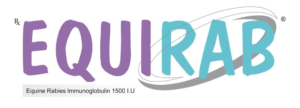If not identified and treated immediately, sepsis is a fatal systemic disease caused by an imbalanced host response to infection. It can cause multiple organ failure and death. According to a global scenario, sepsis affects 49 million individuals worldwide and might cause 11 million fatalities annually, or one death for every five sick persons. Inflammation is the initial clinical sign of sepsis, which progresses to circulatory organ dysfunction, an elevated heart rate, respiratory failure, fever, leukopenia, hypotension, leukocytosis, cytokine storm, and a high propensity for opportunistic infections with hematopathology changes and clinical features such as consumptive thrombocytopenia, haemolytic anaemia, vascular micro thrombosis, multiorgan dysfunction syndrome, coagulopathy and septic shock.
Ref – (https://www.who.int/news-room/fact-sheets/detail/sepsis;singer M, Deutschman CS, Seymour CW, et al. The third international consensus definitions for sepsis and septic shock (Sepsis-3). JAMA. 2016; 315:801–810 )
The World Health Organization views sepsis as a health priority (WHO). Critical care products aid in recovering from and/or managing conditions that are/may be life-threatening in order to address the needs of seriously or critically ill patients who have, are at risk.
In low- and middle-income countries, particularly in Sub-Saharan Africa, the South Pacific islands, and South, East, and Southeast Asia, sepsis cases accounted for almost 85% of all cases. Although women are more likely than men to acquire sepsis, more than 40% of all cases include children under the age of five. Worldwide sepsis event cases were expected to total 48.9 million in 2017, and sepsis-related deaths were estimated at 11.0 million, or 19% of all deaths documented worldwide.
Our wide range of innovative, evidence-based emergency care and critical care solutions with aim to provide best treatment and better chance of returning to an active, normal life gives patients in intensive care units (ICUs) a fighting chance against bacterial, fungal infections, or new-borns battling early indications like diminished lung capacity, etc.
Worldwide, animal bites are a major cause of disease and mortality. Over five million people are bitten by snakes each year, mostly in South-East Asia and Africa. For bites from deadly snakes, prompt medical attention and the proper antivenom are necessary. Tens of millions of injuries result from dog bites every year, with youngsters at greatest risk. Following dog, cat, and monkey bites, rabies is a serious health hazard.
The portfolio for bite management offers Our selection of products support in management of dog to snake bite. Snakebite is a worldwide disease that claims 5.4 million victims each year, with 2.4 million of those instances occurring in India. Amputations and death are among the serious consequences. Another silent pandemic, rabies kills 60,000 people annually and is primarily found in Asia and Africa.
Ref – https://www.who.int/news-room/fact-sheets/detail/animal-bites





